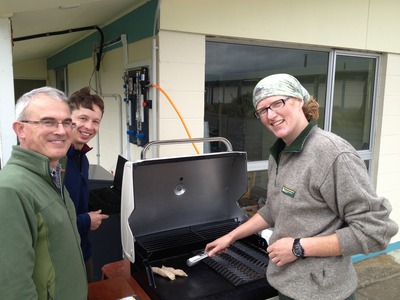Hydrogen - the new ‘green’ superfuel
Thousands of remote Australian communities and South Pacific islands stand to benefit from a clean energy pilot program being undertaken in New Zealand. The program is being run by Callaghan Innovation (formerly known as Industrial Research Limited), a New Zealand government research institute which, for the past decade, has been involved in finding practical uses for hydrogen.
Callaghan’s Team Manager for Energy Technologies, Alister Gardiner, was originally interested in developing fuel cells for transport applications but soon realised the highest energy costs were in isolated areas. “This is where they currently use diesel and LPG for everything and both of those emit highly undesirable pollutants, including greenhouse gases,” he explained.
Last November, Gardiner and his team deployed a small hydrogen production system on a wildlife reserve in Wellington Harbour. Designed specifically to capitalise on surplus renewable electricity produced from wind and solar PV, the pilot program has shown just how effective and efficient hydrogen is.
“Although we have only used the system in Wellington Harbour intermittently, it has produced more than enough hydrogen to power the heating of water and cooking requirements in a typical energy-efficient home,” said Gardiner.
“Operating the equipment less than half the time, it has produced 800 kWh of hydrogen.
“The technology is scalable and could quite easily be used as the sole source of water heating and cooking for small communities, such as those in outback Australia and on islands in New Zealand and throughout the South Pacific.”

Before obtaining the most recent results, Gardiner’s team had already proven how useful hydrogen production could be by positioning a small demonstration plant in Totara Valley in remote Wairarapa on New Zealand’s North Island. Furthermore, modelling has shown that the costs of producing hydrogen are comparable to the use of diesel and LPG, making it immediately viable after manufacturing scale-up.
Gardiner is excited that the technology could “do away with the need for dirty fuels to power remote communities”, noting, “If we had any qualms that it would cost more, we wouldn’t be talking about it.”
He said, “Combined heat and power (CHP) generally uses fossil fuels to produce heat and electricity and in this case we are using surplus electricity to produce clean fuel for heating water and cooking.”
Gardiner believes hydrogen is set to play a far greater role in both Australia and New Zealand. He suggested using it as “a clean means of cooking snags or king prawns on a barbecue. They taste just as good but they don’t have any downside when it comes to polluting the environment.”
Gardiner is a keynote speaker at the All-Energy Australia conference and exhibition in Melbourne from 9-10 October, where he will put forward the case for hydrogen in a session on power storage on the second morning. With more than 100 local and international speakers and 250 exhibitors, the annual event attracts up to 5000 delegates from around the world.
“Because it is often unfairly overlooked, I will raise hydrogen as an alternative to batteries and pumped hydro for the balancing of electricity supply and demand,” said Gardiner.

Untapped solar could achieve billions in savings
UNSW research has found that people living in apartments, social housing and private rental...
NSW South Coast gains its first community battery
The Shell Cove battery is one of 54 batteries currently being rolled out across Endeavour's...
The sustainability sector's thoughts on a 'future made in Australia'
Hear thoughts from leaders in heavy manufacturing and climate tech, regional areas and cities as...











